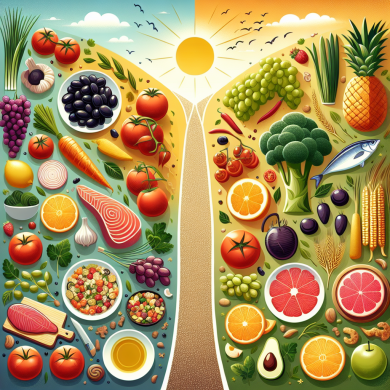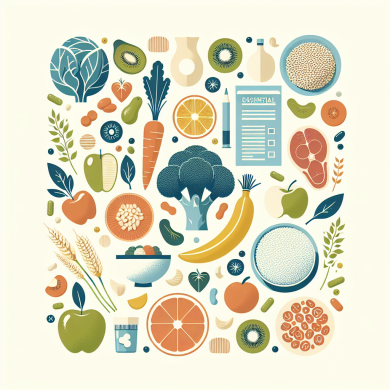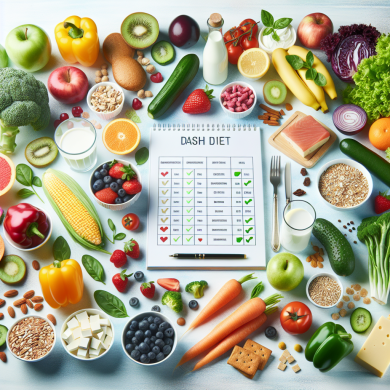Optimize Health with a DASH Diet Meal Plan
Introduction to the DASH Diet
The DASH diet, short for Dietary Approaches to Stop Hypertension, is a dietary pattern promoted by the National Heart, Lung, and Blood Institute (NHLBI) to prevent and control hypertension. It emphasizes the consumption of fruits, vegetables, whole grains, and lean proteins, while minimizing the intake of salt, red meat, and added sugars. This balanced approach not only aids in managing blood pressure but also supports overall health improvement.
The Core Principles of the DASH Diet
At its core, the DASH diet encourages:
– High consumption of fruits and vegetables.
– Inclusion of whole grains.
– Lean proteins such as fish, poultry, and beans.
– Low-fat dairy products.
– Reduction in salt, red meat, and added sugars.
These principles help in reducing blood pressure and improving cardiovascular health. The diet is rich in potassium, magnesium, and calcium, which are crucial for controlling blood pressure.
Health Benefits of the DASH Diet
The DASH diet is not just effective for lowering blood pressure. Here are some additional health benefits:
Improved Heart Health
By emphasizing heart-healthy foods, the DASH diet helps reduce cholesterol levels and improves overall cardiovascular health. The diet’s focus on healthy fats and low sodium intake is particularly beneficial for heart health.
Weight Management
The balanced nature of the DASH diet makes it easier to maintain a healthy weight. The emphasis on whole foods and portion control helps prevent overeating and supports weight loss efforts.
Reduced Risk of Chronic Diseases
Following the DASH diet can reduce the risk of developing chronic diseases such as type 2 diabetes and certain types of cancer. The diet’s focus on nutrient-rich foods supports overall immune function and disease prevention.
Enhanced Nutritional Intake
The DASH diet encourages the consumption of a wide variety of nutrient-dense foods, ensuring an ample intake of essential vitamins and minerals. This helps in maintaining optimal health and energy levels.
Building a DASH Diet Meal Plan
Creating a DASH diet meal plan involves selecting foods from each of the recommended food groups. Here’s a step-by-step guide to building a balanced meal plan:
Breakfast
Start your day with a nutritious meal that includes:
– Oatmeal topped with fresh berries and a sprinkle of nuts.
– A glass of low-fat milk or a serving of yogurt.
– Whole-grain toast with avocado spread.
Lunch
For lunch, focus on incorporating vegetables and lean proteins:
– A large salad with mixed greens, cherry tomatoes, cucumbers, grilled chicken, and a vinaigrette dressing.
– A whole-grain wrap filled with turkey, spinach, and hummus.
– Lentil soup with a side of whole-grain bread.
Snacks
Choose healthy snacks that are low in sodium and sugar:
– Fresh fruit such as an apple or banana.
– A small handful of unsalted nuts.
– Raw vegetable sticks with hummus.
Dinner
For dinner, aim for a balanced plate:
– Grilled salmon with steamed broccoli and quinoa.
– Stir-fried tofu with mixed vegetables and brown rice.
– A serving of whole-grain pasta with tomato sauce and roasted vegetables.
Desserts
If you have a sweet tooth, opt for healthy desserts:
– A bowl of fresh fruit salad.
– Baked apples with cinnamon.
– A small serving of dark chocolate.
Practical Tips for Following the DASH Diet
To successfully implement the DASH diet, consider these practical tips:
Plan Ahead
Prepare a weekly meal plan and grocery list to ensure you have all the necessary ingredients on hand. This will help you avoid the temptation of processed foods.
Read Food Labels
Pay attention to food labels, particularly the sodium content. Aim to choose products with the lowest sodium levels.
Gradual Changes
If you’re new to the DASH diet, make gradual changes to your eating habits. Start by increasing your intake of fruits and vegetables and gradually reduce your sodium intake.
Experiment with Herbs and Spices
Use herbs and spices to flavor your meals instead of salt. This will enhance the taste of your dishes while keeping sodium levels in check.
Stay Hydrated
Drink plenty of water throughout the day. Staying hydrated supports overall health and helps control hunger.
Overcoming Challenges
Like any diet, the DASH diet comes with its challenges. Here are some common obstacles and ways to overcome them:
Cravings for Salty Foods
If you find yourself craving salty foods, try seasoning your meals with alternative spices and herbs. Gradually reducing salt in your diet will help reset your palate.
Eating Out
When dining out, choose restaurants that offer healthy options. Don’t hesitate to ask for modifications, such as dressing on the side or grilled instead of fried options.
Time Constraints
Busy schedules can make it challenging to prepare healthy meals. Consider batch cooking on weekends to have meals ready for the week. Utilize simple recipes that require minimal preparation time.
Conclusion
The DASH diet is a sustainable and effective way to optimize your health. By focusing on nutrient-rich foods, reducing sodium intake, and maintaining balanced meals, you can improve your heart health, manage your weight, and reduce the risk of chronic diseases. With careful planning and commitment, the DASH diet can become a natural part of your lifestyle, leading to long-term health benefits.
Embrace the DASH diet today and take a proactive step towards a healthier, more vibrant life.















Add comment